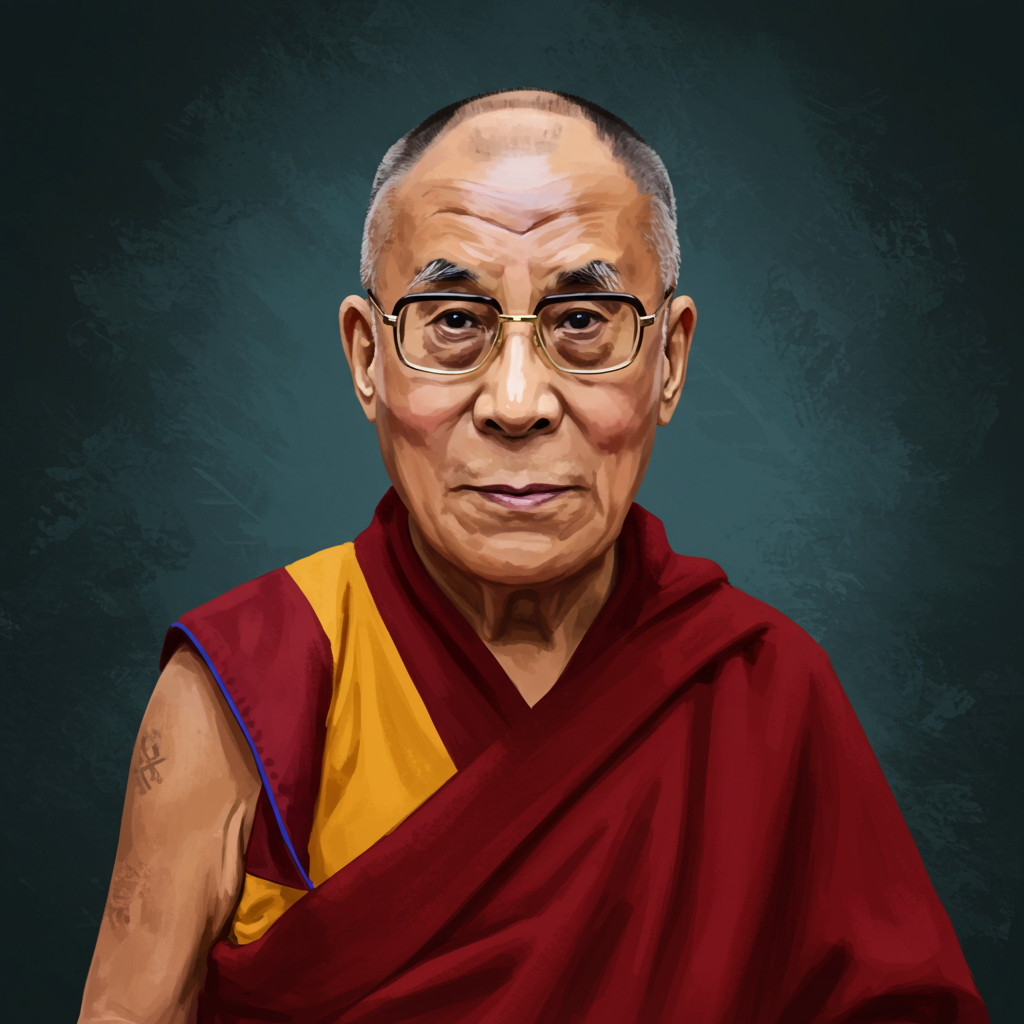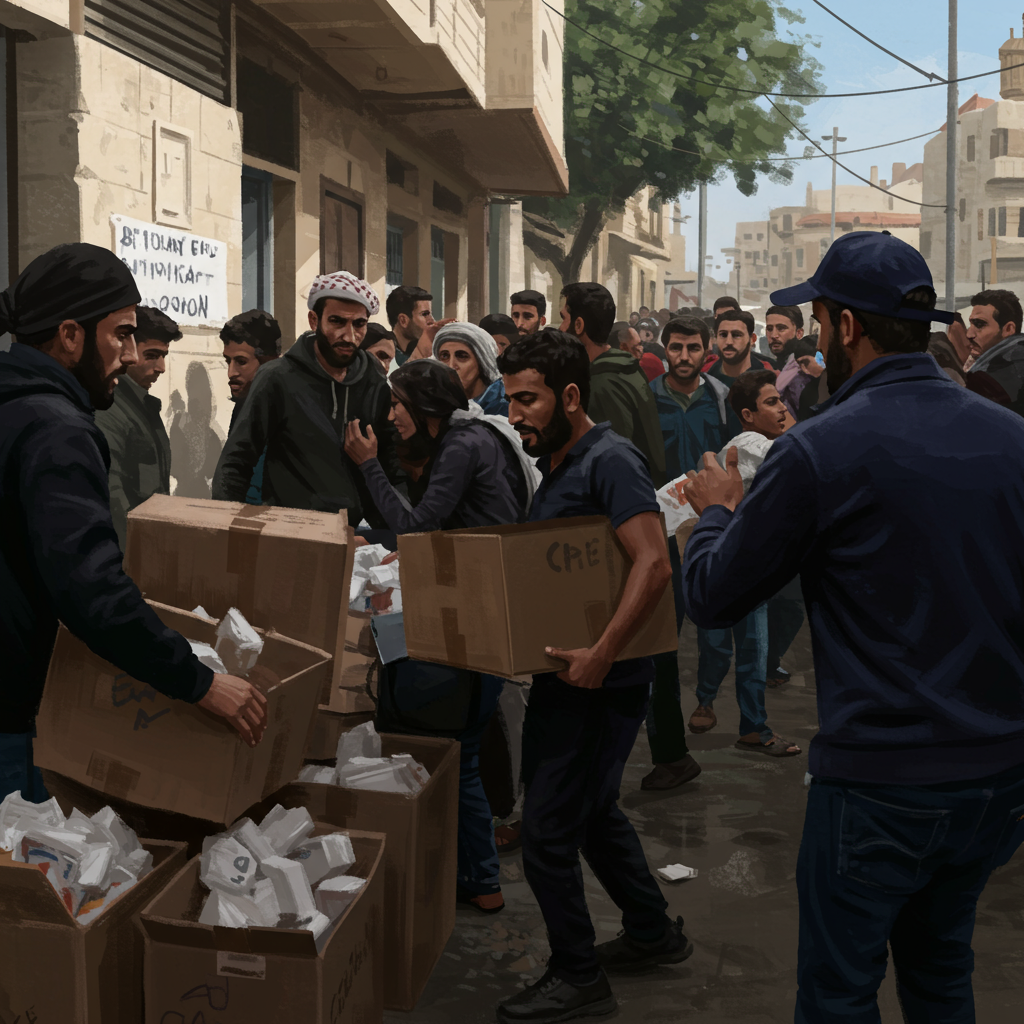Explore the compelling story of the 14th dalai Lama, Tenzin Gyatso, the spiritual leader of Tibetan Buddhism and a global peace icon. Forced into exile from his homeland of Tibet in 1959, he has spent decades championing the cause of his people from India. As he nears his 90th birthday, questions surrounding the continuation of this centuries-old institution and the critical issue of his succession take center stage, setting the stage for a significant spiritual and political conflict with the chinese government.
Who is the Dalai Lama?
Tenzin Gyatso, born Lhamo Dhondub on July 6, 1935, in a small farming village outside the traditional borders of Tibet, is recognized as the 14th incarnation of the Dalai Lama lineage. Tibetan Buddhists believe the Dalai Lama is the reincarnation of Avalokiteshvara, the Bodhisattva of Compassion, an enlightened being who chooses to be reborn to help others.
At the tender age of two, a search party of high-ranking Buddhist officials identified young Lhamo Dhondub using traditional methods, including sacred visions and tests involving identifying possessions of the 13th Dalai Lama. He was formally enthroned before his fourth birthday and given the monastic name Tenzin Gyatso. His early life was spent in monasteries, receiving rigorous training that culminated in achieving the Geshe Lharampa Degree, equivalent to a doctorate in Buddhist philosophy.
Rise to Power Amidst Tumult
His period of full political responsibility arrived abruptly in 1950. At just 15 years old, Tenzin Gyatso assumed full state power as troops from China’s newly established Communist government marched into Tibet. This invasion marked a dramatic turning point for Tibet and the young Dalai Lama.
In May 1951, China formalized Tibet’s incorporation with the controversial “17-point agreement.” This document, viewed by Tibetans as having been signed under duress, cemented Beijing’s claim over the region. Despite the agreement, tensions simmered, leading to growing resistance within Tibet against Chinese control.
The Road to Exile: The 1959 Uprising
The situation escalated dramatically in March 1959. A pivotal moment occurred when a Chinese general invited the Dalai Lama to a dance performance, an invitation widely feared by Tibetans to be a trap intended for abduction. Thousands of Tibetans gathered around his palace in Lhasa, the capital, to protect their beloved leader.
This protective gathering quickly evolved into widespread protests against the Chinese military presence and control. The People’s Liberation Army responded with a brutal crackdown. Reports indicate thousands of Tibetans tragically lost their lives during this period.
Amidst this violence and fearing for his safety and the future of Tibet’s spiritual and cultural heritage, the Dalai Lama made the momentous decision to flee. Guided, he later said, by divine orders from his personal oracle, he disguised himself as a soldier. One night, he slipped away from the palace and into the protective crowd.
The Grueling Trek and Sanctuary in India
Together with a small entourage, the Dalai Lama embarked on an arduous 15-day journey across the treacherous Himalayan mountains. This perilous trek led them to the border of India.
The Indian government, under Prime Minister Jawaharlal Nehru, granted asylum to the Dalai Lama. He eventually settled in Dharamshala in the state of Himachal Pradesh, located in northern India. This mountainous town became the seat of the Tibetan government-in-exile (officially known as the Central Tibetan Administration) and the home for a significant portion of the Tibetan diaspora. Approximately 80,000 Tibetans followed the Dalai Lama into exile, many establishing communities in and around Dharamshala.
Life in Exile: Preserving Culture and Seeking Autonomy
From his base in Dharamshala, the Dalai Lama took on the immense task of preserving Tibetan culture, language, and religion in the face of immense pressure and suppression inside Tibet. He also dedicated himself to publicizing the plight of the Tibetan people on the global stage. His efforts included appealing to the United Nations, which resulted in the General Assembly adopting resolutions in 1959, 1961, and 1965 calling for the protection of Tibetan human rights and cultural identity.
The Dalai Lama became a global advocate for non-violence and a “middle way” approach to resolving the status of Tibet. Rather than pushing for full independence, this policy advocates for genuine autonomy for Tibet within the framework of the People’s Republic of China.
The “Middle Way” and International Recognition
In 1987, during a period of renewed protests in Lhasa against Chinese policies, including large-scale settlement of Han Chinese in Tibetan areas, the Dalai Lama proposed a five-point peace plan. Key aspects included transforming Tibet into a zone of peace and reversing China’s demographic policies.
His unwavering commitment to peaceful resistance and dialogue, despite the suffering inflicted upon the Tibetan people under Chinese rule, earned him widespread international acclaim. In 1989, he was awarded the Nobel Peace Prize. The Nobel committee specifically praised his consistent opposition to violence, highlighting it as “all the more remarkable when it is considered in relation to the sufferings inflicted on the Tibetan people.”
Over the decades, the Dalai Lama has met with numerous world leaders, religious figures, and celebrities, building a network of international support for the Tibetan cause. He has met several times with Popes, co-authored books with figures like Archbishop Desmond Tutu, and garnered support from Hollywood figures.
Challenges and Controversies
Despite international recognition, the Dalai Lama’s “middle way” philosophy has faced criticism from some Tibetans who believe it has been too lenient towards Beijing. Events like the 2008 riots in Lhasa, where rights groups estimated dozens were killed during a crackdown on Tibetan protests, have fueled this debate within the exile community. Some Tibetan parliamentarians advocate for a shift towards demanding self-determination if dialogue with China remains unproductive.
The Dalai Lama has also faced personal controversies. A widely reported incident in 2023 involving a child and a previous comment in 2019 about a future female Dalai Lama’s appearance drew criticism. His office issued apologies for both instances, explaining his playful nature in one case while acknowledging the inappropriateness of the other comment.
Relinquishing Political Power and the Succession Question
Historically, the Dalai Lama served as both the spiritual and political leader of Tibetans. However, in a significant move in March 2011, the 14th Dalai Lama formally relinquished his political authority to the democratically elected leadership of the Tibetan government-in-exile. This allowed him to focus primarily on his role as a spiritual guide.
As the Dalai Lama has aged, experiencing minor health issues, the issue of his succession has become increasingly prominent. This question is critical not only for Tibetan Buddhists but also carries significant implications for the future of the Tibetan cause and the community in exile. Concerns grew following earlier suggestions from the Dalai Lama that the institution might not necessarily continue, or that its future should be decided by the Tibetan people.
The Ancient Tradition and the Dispute with China
The traditional process for finding a new Dalai Lama begins after the incumbent’s death. High-ranking lamas look for spiritual signs, interpret omens, and visit sacred sites like Lhamo Latso lake for visions to identify a child, typically born around the time of death. This child is then tested to confirm recognition, often by identifying objects belonging to the previous Dalai Lama. The current Dalai Lama himself has stated that there is no religious reason why the next reincarnation could not be a woman or of a different nationality.
However, this deeply spiritual process is at the heart of a major dispute with the Chinese government. Beijing views the Dalai Lama as a dangerous separatist and insists it has the sole authority to approve the reincarnation of high-ranking lamas in Tibet. China cites a 2007 law mandating state approval for all reincarnations, requiring searches within China and adherence to specific “religious rituals and historical customs” as defined by the state, often referencing the 18th-century golden urn lottery system.
Competing Claims: A Potential Future
The conflict over succession was starkly demonstrated in 1995 regarding the Panchen Lama, the second most important figure in Tibetan Buddhism. After the previous Panchen Lama died, the Dalai Lama recognized a six-year-old boy, Gedhun Choekyi Nyima, as his reincarnation. Within days, Chinese authorities took the child into custody, and his whereabouts remain unknown. China subsequently appointed its own candidate as the 11th Panchen Lama, who is widely rejected by Tibetans.
Given this precedent, many observers believe it is highly likely that after the 14th Dalai Lama’s passing, two rival candidates will emerge: one chosen by the Tibetan Buddhist leaders in exile according to tradition, and another appointed by the Chinese government.
The Latest Announcement and Geopolitical Stakes
During celebrations marking his upcoming 90th birthday (June 2025), the Dalai Lama addressed the succession question directly and definitively. In a statement, he confirmed that the institution of the Dalai Lama “will continue.”
Crucially, he also stated that only his office, specifically referencing The Gaden Phodrang Trust which he founded, holds the authority to recognize his future reincarnation. He explicitly warned that “no-one else has any such authority to interfere in this matter,” a clear message directed at China. He has also previously indicated that his successor would be born in the “free world” outside of China, emphasizing freedom as essential for fulfilling the Dalai Lama’s mission.
Beijing quickly responded by reiterating its stance: any successor must be approved by the Chinese government, adhering to Chinese laws and regulations. China maintains that Tibet has prospered under its rule and dismisses the Dalai Lama as a political exile seeking to split China.
This succession issue has significant geopolitical implications. India, hosting the largest Tibetan exile community, balances its relationship with China while providing refuge. The United States, through legislation like the Tibetan Policy and Support Act (TPSA) of 2020, explicitly supports the Dalai Lama’s right to determine his reincarnation and authorizes sanctions against Chinese officials who interfere.
The exiled Tibetan community faces ongoing challenges, including reduced international funding, concerns about the Dalai Lama’s health, and a lack of formal dialogue with China since 2010. China has tightened border controls, hindering refugee flows, and implemented demographic changes within Tibet. Despite these difficulties and the looming succession question, the community in Dharamshala and elsewhere remains devoted to the Dalai Lama, preparing to celebrate his 90th birthday and continuing their efforts to preserve their unique heritage.
Frequently Asked Questions
Why did the Dalai Lama leave Tibet and where does he live now?
The Dalai Lama fled Tibet in March 1959 during a brutal Chinese crackdown on a Tibetan uprising in Lhasa. He feared abduction and the suppression of Tibetan culture and religion by the Chinese Communist government, which had taken control of Tibet in the 1950s. He found asylum in India and has since lived in exile in Dharamshala, in the northern Indian state of Himachal Pradesh, which serves as the center for the Tibetan government-in-exile.
How is the Dalai Lama’s successor traditionally chosen, and why is it disputed?
Traditionally, after a Dalai Lama’s death, high-ranking lamas search for his reincarnation, usually a young child, using spiritual signs, omens, and visions. The child is tested by identifying objects belonging to the previous Dalai Lama. The dispute arises because the Chinese government insists it has the sole authority to approve the reincarnation according to Chinese laws and historical customs, referencing a 2007 law and the golden urn system, while Tibetan Buddhists assert that the process is a spiritual matter determined by their religious authorities, primarily The Gaden Phodrang Trust.
What has the current Dalai Lama said recently about his succession plans?
During celebrations around his 90th birthday in June 2025, the 14th Dalai Lama confirmed that the institution of the Dalai Lama will continue. He explicitly stated that only The Gaden Phodrang Trust, associated with his office, has the authority to recognize his future reincarnation and that no external party, referring to China, has the right to interfere. He has also indicated that his successor would be born in the “free world” outside of China.


